Other Editors
The Intonation Table Editor
18-1
Chapter 18
Other Editors
In addiion to the editors accessible from their respective modes, there are three editors that
enable you to modify other performance parameters of the K2600. They are the Intonation Table
Editor, the Velocity Map Editor, and the Pressure Map Editor.
The Intonation Table Editor
Intonation tables deÞne the interval between the notes in each octave. The default intonation
table is
1 Equal
, which sets precisely equal intervals between notesÑthe standard for modern
western music. If youÕre interested in playing other styles of music, you can use any of the
K2600Õs other factory intonation tables, or create you own with the Intonation Table Editor.
The intonation table is selected in Master mode with the Intonation parameter. HereÕs the list of
available factory intonation tables (check the
MusicianÕs Reference
for brief descriptions):
As you scroll through the options for the Intonation parameter, youÕll notice an eighteenth entry
with a name like
Obj v
n.nn
. This isnÕt really an intonation table; itÕs simply a convenient place
for the K2600 to keep a record of the current version of ROM objects. If you ever need to Þnd out
the version of ROM objects loaded into your unit, this is the place to check. Just remember, if
youÕre using a nonstandard intonation table, that youÕll need to reset the Intonation parameter
after you check the ROM object version list at ÒTableÓ 18.
Depending on the number of options youÕve installed in your K2600, you may see several
intonation-table entries numbered as high as 22.
ItÕs important to emphasize that the detuning values for each parameter affect the intervals in
each octave independently. That is, notes that are an octave apart will remain perfectly tuned
regardless of the detuning between notes within the octave. Consequently, editing intonation
tables will not enable you to create tunings with more (or fewer) than 12 notes per octave. If you
want to do this, use the Keymap Editor, assign each key to its own key range, then tune the
samples in each key range.
When youÕre ready to edit an intonation table, select Master mode, then select the Intonation
parameter. Use any data entry method to select the intonation table you want to edit. Check the
value of the Intonation Key parameter (IntonaKey). This sets the tonic, or reference note for the
parameters on the Intonation Table Editor page. WeÕll explain this below.
1 Equal 9 Indian Raga
2 Just 10 Arabic
3 Just b/7th 11 Bali/Java 1
4 Harmonic 12 Bali/Java 2
5 Just Harmonic 13 Bali/Java 3
6 Werkmeister 14 Tibetan
7 1/5th Comma 15 CarlosAlpha
8 1/4th Comma 17 Pyth/dim5

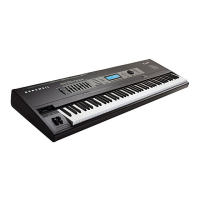
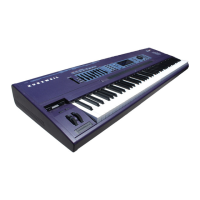
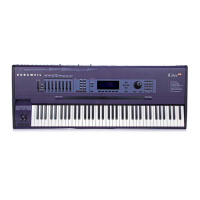

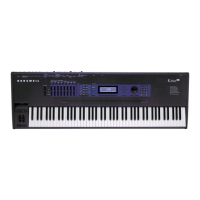




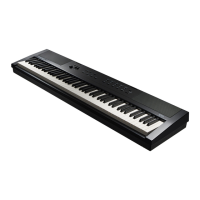
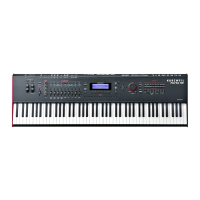
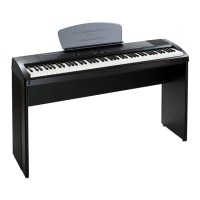
